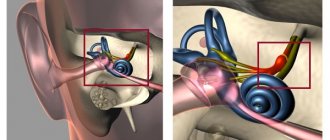September 15, 2010
How can it be easier to get through the unpleasant period immediately after quitting smoking and not start smoking again?
Not all smokers manage to give up their bad habit easily and without problems. Nicotine stimulates metabolic processes and the functioning of the nervous system, gastrointestinal tract, respiratory system and cardiovascular system. Therefore, when quitting tobacco, the body, unaccustomed to independent effective activity, has difficulty adjusting to its usual mode of operation and experiences serious discomfort.
. In everyday life this is called “withdrawal”, and experts call it withdrawal syndrome. How can you get through this unpleasant period easier and not smoke again?
Content:
- Pathogenetic basis of tobacco addiction: 1.1. Why is it important to manage withdrawal symptoms when quitting smoking?
- Smoking withdrawal syndrome: how long it lasts, main manifestations.
- How to ease withdrawal symptoms and get rid of tobacco addiction.
Tobacco smoking is one of the main causes of premature mortality in the world; according to WHO estimates, about 7 million people die annually from diseases caused by this addiction. But the results of an anonymous survey in which more than a million people participated are impressive - almost 60% are actually thinking about giving up cigarettes, and more than half of them are planning a visit to a specialized specialist. However, a serious obstacle to getting rid of this addiction is withdrawal syndrome; smoking does not cause it as quickly, and, of course, not as severely as alcohol or drugs. Nevertheless, vivid manifestations of withdrawal, and the psychological habit often “take their toll”, and the person again reaches for the pack, and is not stopped by the well-known consequences for the body. How realistic is it to cope with nicotine withdrawal on your own? What methods really help, and what are not worth spending money, time and effort on?
The mechanism of formation of nicotine addiction
After developing a stable attachment, a person can no longer do without cigarettes. When you try to quit a destructive hobby, withdrawal occurs - unpleasant and painful manifestations. The body, accustomed to constant psychostimulation , requires new portions of tobacco and refuses to function normally.
During the process of inhaling smoke, about a quarter of the nicotine enters the circulatory system and reaches the brain within a few seconds. Thanks to this, the intoxicating effect occurs quickly and the person feels satisfaction, improved mood, and activation of mental processes. This happens because nicotine stimulates areas of the brain responsible for the production of pleasure hormones: dopamine, norepinephrine, endorphin. The positive psychostimulating effect of cigarettes forces a person to again resort to tobacco products in order to maintain their emotions and physical condition at the desired level.
Over time, the smoker will need to increase the dosage or frequency of cigarette consumption. Addiction to nicotine occurs very quickly and takes control of a person’s life. Now not a single important conversation, lunch break, walk or outdoor recreation can do without a cigarette. And all attempts to give up tobacco are met with unpleasant symptoms of withdrawal.
Cost of services
Field service SERVICES LIST PRICE Conclusion from binge drinking - “Triple drip” (Promotion for 3 summer months!) 6,500 5,000 rub. Withdrawal from binge drinking - Standard dropper (Promotion!) 3,000 rub. Conclusion from binge drinking - Double drip (Best price!) 5,000 rub. VIP - cleansing 7,000 rub. Withdrawal from binge drinking + simultaneous coding for 12 months 7,900 rub. Withdrawal from binge drinking + simultaneous coding for 24 months 9,500 rub. Consultation with a psychiatrist at home 5,000 rub. Psychiatrist-narcologist on duty at home (6 hours) 40,000 rub. Departure outside the Moscow Ring Road, for every 10 km of travel 500 rub. Visit of a narcologist to your home 1,500 rub. Transportation to the hospital accompanied by a doctor by agreement Penalty (if the patient refuses therapy) 3,000 rub.
Course therapies and additional services SERVICES LIST PRICE Metabolic therapy (for cerebral vessels, cardiac system and nervous system): 1 dropper 3,000 rub. Course of 5 droppers 12,000 rub. Hepatoprotectors (for the liver): 1 dropper 3,000 rub. Course of 5 droppers 12,000 rub. Nootropic therapy (for the brain): 1 dropper 3,000 rub. Course of 5 droppers 12,000 rub. Plasmapheresis 13,000 rub. Complex of tests + ECG 5,000 rub. Therapeutic inhalation with Xenon (1 liter) 5,000 rub. Therapeutic Xenon inhalation (1 liter) when paying 10 or more 4,500 rub. Ozone therapy 2,000 rub. Oxygen therapy 1,500 rub. ILBI (intravenous laser irradiation of blood) 2,000 rub.
Psychotherapy SERVICES LIST PRICE Single and intensive sessions: Psychological consultation in the clinic 3,500 rub. Single psychotherapy session (45 minutes) 3,500 rub. Intensive session (lasts up to 3 astronomical hours) 8,000 rub. Family counseling 5,000 rub. Courses: 4 sessions per month with a psychologist (1 time per week) 14,000 rub. 8 sessions per month with a psychologist (2 times a week) 28,000 rub. 12 sessions per month with a psychologist (3 times a week) 42,000 rub. 4 sessions per month with a psychiatrist (once a week) 13,000 rub. 8 sessions per month with a psychiatrist (2 times a week) 24,000 rub. 12 sessions per month with a psychiatrist (3 times a week) 33,000 rub.
Promotions and discounts When you return to the clinic - 10% discount Discount on initial application based on recommendation - 15%! Payment for a taxi during hospitalization in a hospital (from 3 days) – up to 1,000 rubles. by check
- Please note that this price list does not contain a complete list of services . You can find a detailed list of services on the Prices . If you have not found the service you are interested in, please call us at +7 and get a free consultation from our specialist!
Pathogenetic basis of tobacco addiction
The name “nicotine” itself appeared in the middle of the 16th century, after the French ambassador to Portugal Jacques Nicot presented this strange remedy to Catherine de Medici. Since that time, smoking has quickly spread throughout the world and has long been considered a universal “cure” for various diseases and a “way” to pass the time pleasantly. Only by the middle of the last century was the negative impact of tobacco on health established and finally proven.
The harmful effects of tobacco smoke are caused not only by nicotine, but also by carbon monoxide and other combustion products (acetaldehyde, acetone, hydrogen cyanide, ammonia, etc.). But nicotine itself has a psychoactive addictive effect - the substance causes a feeling of pleasure and satisfaction by stimulating the production of dopamine and other neurotransmitters (serotonin, endorphins, γ-aminobutyric acid). In addition, nicotine also activates the production of adrenaline, which is accompanied by suppression of hunger, increased blood pressure and heart rate.
As a result, the natural ability to experience pleasure gradually atrophies, which is the basis for the development of smoking withdrawal syndrome, the symptoms of which appear even with short-term deprivation of cigarettes. A person’s emotional state is largely determined by the presence or absence of nicotine in his blood. The resulting vicious circle leads to the formation of a stable psychophysical dependence, which, according to some experts, is comparable in strength to addiction to soft drugs.
In addition, over time, the smoker develops peculiar “rituals” (the first cigarette with coffee, a smoke break after negotiations, etc.), which, as it seems to him, help him overcome various stressful situations, fatigue and boredom.
Consequences of cigarette addiction
Tobacco smoke contains many chemicals and compounds. In addition to nicotine, the smoker inhales carbon monoxide, tar, heavy metal salts, radioactive and carcinogenic substances. All these components harm the body to one degree or another causing:
- unreasonable excitability and irritability;
- metabolic disorders;
- narrowing of blood vessels;
- changes in intestinal motility;
- increased blood pressure and heart rate.
When smoking even one cigarette, a person inhales more than 40 chemical components that can cause the formation of cancerous tumors. Of course, the respiratory system, gastrointestinal tract and liver are primarily at risk of developing cancer.
All organs that undergo structural and functional changes are affected by nicotine. In the long term, tobacco product abuse increases the likelihood of hypertension, heart attack, stroke, atherosclerosis, stomach and duodenal ulcers, and lung diseases. Smokers are more likely to develop viral and respiratory illnesses, their appearance suffers, and their teeth and bone tissue are destroyed. For women, cigarette smoke is dangerous due to the early onset of menopause and menstrual irregularities. The above manifestations should give pause to anyone who is drawn to tobacco again. It’s better to decide how to quickly and painlessly survive withdrawal than to further expose your body to the harmful effects of nicotine.
Why is it important to manage withdrawal symptoms when quitting smoking?
The consequences of prolonged smoking are:
- cardiovascular diseases;
- lesions of the respiratory tract (chronic bronchitis, obstructive pulmonary disease, predisposition to pneumonia, increased risk of infection with tuberculosis, legionellosis, etc.);
- malignant neoplasms;
- reproductive disorders;
- retardation of intrauterine and subsequent neuropsychic development in children born to smoking mothers;
- cataract;
- osteoporosis;
- thyrotoxicosis;
- gastritis and peptic ulcer, etc.
In general, a smoker loses up to 15 years of full life due to the early development of severe chronic diseases. This habit is dangerous not only for the addict himself, but also for those around him. A person exhales about 50% of tobacco smoke, and it contains almost 30 times more carcinogens than inhaled.
Smoking withdrawal syndrome: how long does it last, main manifestations
On average, a smoker's daily need for nicotine ranges from 10 to 40 mg, while one cigarette contains from 0.1 to 0.5 mg of this substance. Withdrawal syndrome develops approximately 2–4 hours after the last cigarette smoked (the exact period depends on the severity of addiction), its symptoms progress gradually and reach a peak on days 1–3.
The following symptoms are characteristic of nicotine withdrawal:
- dryness and irritation of the oral mucosa, pain and sore throat, cough;
- feeling of general malaise, weakness;
- causeless anxiety and restlessness;
- decreased mood, depression, hysteria and irritability;
- sleep disorders;
- an almost constant feeling of hunger - a person tends to replace smoking breaks with sweets and various snacks;
- impaired concentration, decreased performance, fatigue;
- headache.
If you suffer from withdrawal symptoms when quitting smoking, how long will it last is the main question that the patient asks the narcologist. Without medication and/or psychotherapy, the listed symptoms are most pronounced during the first 7 days, then gradually decline, but generally persist for up to a month. However, the desire to smoke, especially in company, after drinking, against a background of stress, bothers the addict for a very long time - from 2-3 months to six months or more. Also characteristic is the desire to “binge” on smoke breaks, which can lead to noticeable weight gain.
The safety of plant cannabinoids is a myth
Many admirers of hemp insist that the narcotic compounds made from it are harmless. Hashish really cannot be classified as a hard drug, but this does not speak in favor of its harmlessness. It does not cause a fatal overdose and does not destroy health within a few months. At the same time, he kills gradually and purposefully.
Today it has been proven that regular use of the drug provokes irreversible mental changes. This is due to the fact that the toxic substances that enter the body along with cannabis are deposited in fatty tissues and remain there. Their negative impact persists for a long time even after a person decides to lead a healthy lifestyle.
How to ease withdrawal symptoms and get rid of tobacco addiction
As practice shows, only a few managed to quit smoking on their own. Most addicts (about 90%) return to cigarettes a few months after quitting. It is for this reason that it is better to contact a specialized specialist.
Doctors usually use combination treatments. These are nicotine-containing medications combined with psychotherapy. This approach makes it possible to increase the effectiveness of therapy by 4–6 times. In accordance with international recommendations, doctors use the so-called “5A” tactics, which consists of the following:
- Ask. By and large, this is a kind of history taking and finding out the current smoking status (how long ago, how many cigarettes per day, etc.).
- Advise. The doctor talks in detail about the dangers of such a habit; visual illustrations of potential complications (cases from medical practice, photographs) provide a good effect.
- Assess. At this stage, the specialist impartially assesses the addict’s motivation for treatment. Usually, special questionnaires are used for this purpose.
- Assist. The doctor draws up an individual treatment plan, offers coding methods, and talks about the advantages and disadvantages of the proposed medications.
- Arrange. Considering the rather sad statistics, a narcologist must constantly support the patient in his quest to finally quit smoking. Individual and group psychotherapy sessions are indicated, and, if necessary, adjustment of medication prescriptions.
The most effective way to relieve withdrawal symptoms is nicotine. But not “cigarette”, but medicinal. This type of therapy is called replacement therapy. Nicotine-containing patches (provide long-term retention of the effect), lollipops, sprays, and chewing gum are used. To achieve the desired result, such drugs are prescribed for 8–10 weeks. An excellent addition to medications is hypnotic coding.
Withdrawal syndrome after smoking is a difficult experience, but modern treatment methods can significantly alleviate it. But the result is worth it! Numerous studies confirm that after quitting cigarettes, overall health improves, the frequency of stress and mood swings decreases, and higher levels of happiness and life satisfaction are also noted.
How to eliminate or alleviate withdrawal symptoms
Let's consider a situation where a person smoked a lot and regularly. Toxic components entered his body, affecting both metabolic processes and the mental background. Nicotine and substances contained in smoke were perceived by the body as “its own”, not foreign. And when their supply suddenly stops, withdrawal syndrome is almost inevitable.
If you feel that cough, nausea, body aches, psychological disorders are getting worse all the time, more and more unpleasant sensations are being added to them, and your general health has already gone far beyond just mild or moderate severity of illness, be sure to consult a narcologist. . Without timely assistance to the body, more serious pathologies may become active.
Detoxification performed by a qualified addiction specialist is a guarantee of quick relief, reducing the risk of health problems and reducing the likelihood that you will take up a cigarette again.
Cleansing the body begins with an examination. It allows you to identify those psychological and physiological deviations that currently exist. Then adequate effective therapy is selected. Often it includes drips (intravenously), taking cardiac, sedative, psychotropic and other necessary drugs.
If the treatment is chosen correctly, then after the first session you will be able to feel relief, which will only increase.










